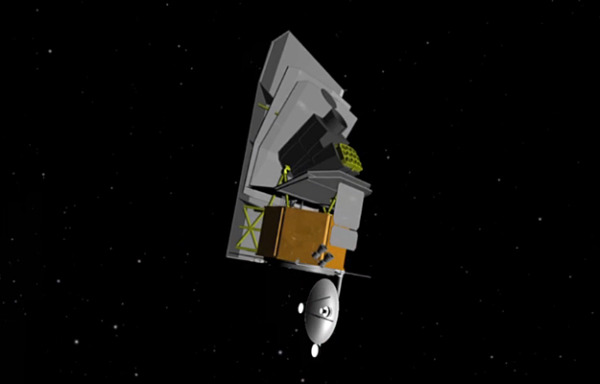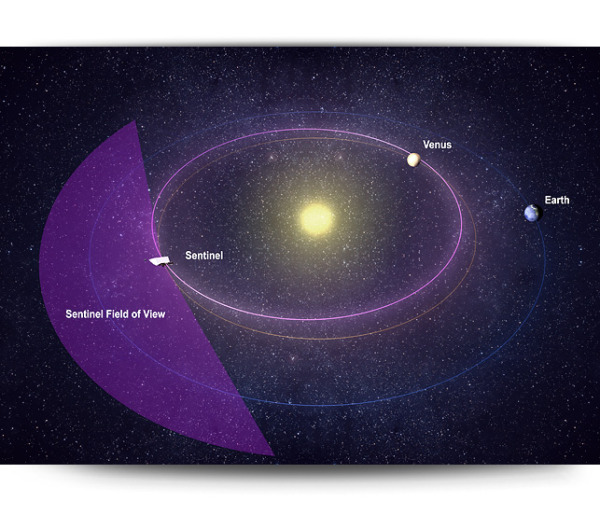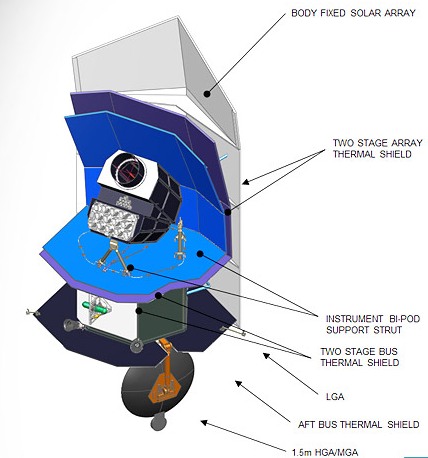Crowd-Funded Space Mission To Protect The Earth From Killer-Asteroids

Former NASA Astronauts and space scientists have announced their crowd-funded mission to map out the orbit of every potential earth-destroying asteroid, using a space telescope which will orbit around the sun.
This will be developed and deployed by the Silicon Valley-based B612 foundation, and it's set to be the most highly advanced asteroid early warning system on the planet. Comets and asteroids falling to Earth are a regular occurence; but as they burn up upon entry into the atmosphere, they end up being mere rocks of a small diameter.
But what about the very thing that killed the Dinosaurs? What about the half-mile in diameter, potentially Earth destroying comet? That is where this Sentinel telescope and its mission will come into play.
“The orbits of the inner solar system where Earth lies are populated with a half million asteroids larger than the one that struck Tunguska (June 30, 1908), and yet we’ve identified and mapped only about one percent of these asteroids to date." Ed Lu, former astronaut and current Chairman of the B612 Foundation commented in a press release.
Using NASA's Near-Earth Object program (NEO), 10,000 objects have been catalogued and analysed: 90% of those are in our region of the solar system and, as Ed said above, a minute 1% of all that are in the Milky Way.
“That’s the urgency of this,” Ed Lu continued. “If there is an asteroid out there that may strike in the next 10 or 20 years, then time’s a wastin’.”
This $200 million Sentinel telescope is predicted to launch in 2017 and will urge the world towards a more privatised version of space exploration, by being the first privately-funded deep space probe in history. Developed by the Ball Aerospace and Technologies Corporation, the Sentinel's vision is build with a HD camera consisting of multiple smaller sensors, which will scan its surroundings (165 square degrees to be exact) every hour for any moving objects around 50 metres in diameter.

 This information is then relayed back to Earth, where an orbit can be calculated. With that, a solid prediction can be made of just where that asteroid will go, giving Earth an early-warning system to anything significant that may come into contact with us.
This information is then relayed back to Earth, where an orbit can be calculated. With that, a solid prediction can be made of just where that asteroid will go, giving Earth an early-warning system to anything significant that may come into contact with us.
In terms of what happens when a killer-asteroid is spotted...the deflection part of it all hasn't quite been figured out yet (don't suggest Bruce Willis: he's past his prime, no Aerosmith ballad can help); but as the Sentinel has already been in preparation by the B612 Foundation for quite some time, that'll probably come after.
The current plans are for this 25-foot telescope to be launched on a SpaceX Falcon 9 rocket, using a gravity assist slingshot around Venus to propel the craft toward the inner solar system. From here, Sentinel will orbit the sun for the initial time of 5.5 years, with the projection of finding 90% of asteroids larger than 500 feet. As Ed rather nicely puts it: “This is going to be the definitive map of the inner solar system.”
Asteroid trajectories will be publicly released through an existing network, and we can't wait to see what they find.
Source: B612 Foundation
Jason England

